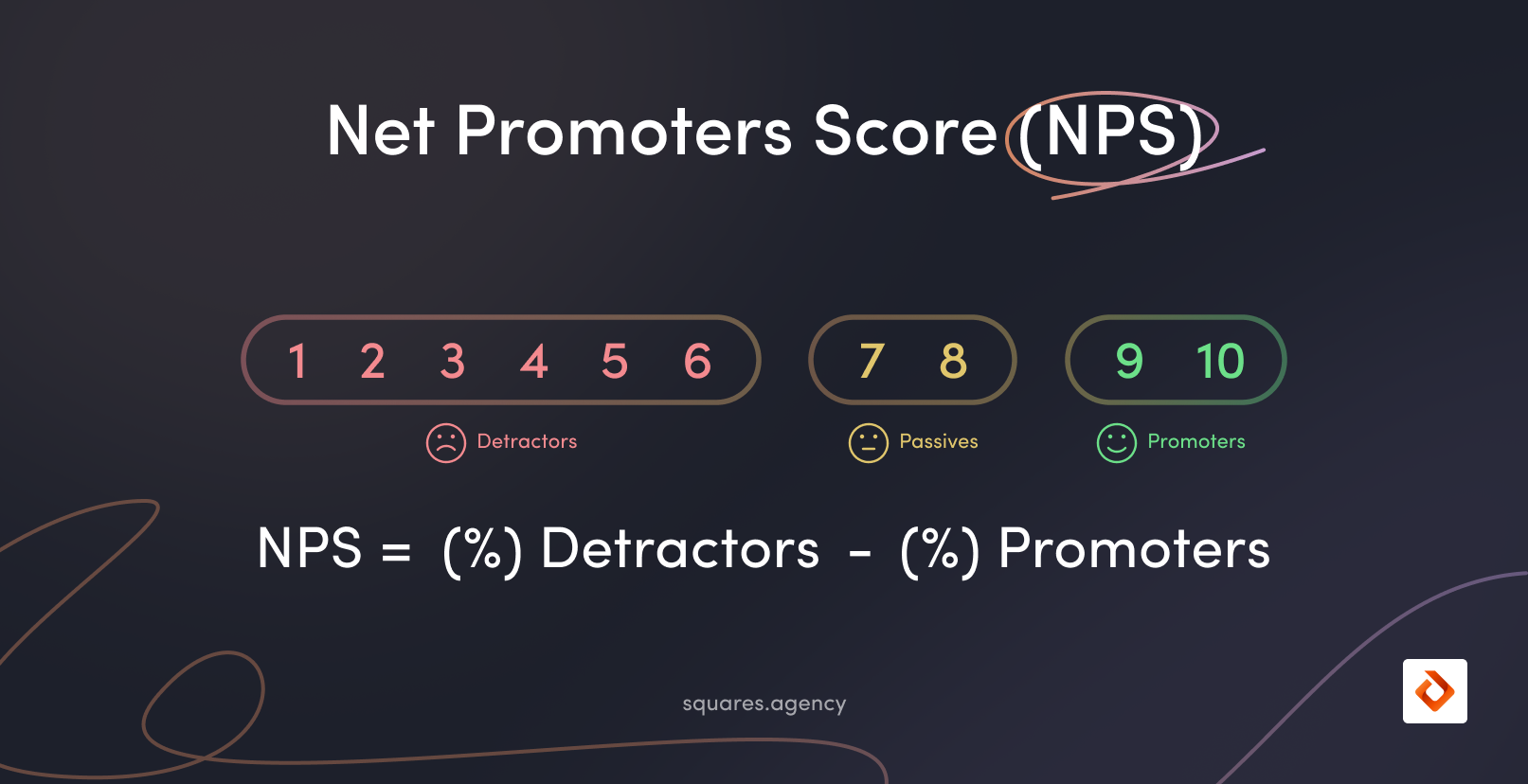NPS (Net Promoter Score) – What Is It?

In today’s competitive business world, understanding customer opinions and loyalty is crucial for the long-term success of any company. One of the most popular and effective tools for measuring customer satisfaction and loyalty is the Net Promoter Score (NPS). But what exactly is NPS, how do you measure it, and why is it so important for businesses? In this article, we will take a closer look at these issues.
Net Promoter Score, or NPS, is a method for assessing customer loyalty developed by Fred Reichheld in 2003. NPS is measured based on a single simple question: “How likely are you to recommend our company/product/service to a friend or colleague?” Responses are given on a scale from 0 to 10, where 0 means “least likely” and 10 means “most likely.”

NPS Categories
Respondents are classified into one of three categories:
- Promoters (9-10): These are loyal enthusiasts who will continue to make purchases and recommend the company to others, driving growth.
- Passives (7-8): They are satisfied with the service but are not loyal promoters. Their loyalty can be easily swayed by competitive offers.
- Detractors (0-6): These are dissatisfied customers who can harm the brand and hinder growth through negative feedback.
How to Measure NPS?
Calculating NPS is simple: subtract the percentage of detractors from the percentage of promoters. The result can range from -100 (everyone is a detractor) to 100 (everyone is a promoter). For example, if 70% of respondents are promoters, 20% are neutral, and 10% are detractors, the NPS will be 60 (70% – 10%).
Why Measure NPS?
- Simplicity and Universality: NPS is easy to understand and can be applied across any industry.
- Customer Loyalty Indicator: NPS helps understand how loyal and satisfied customers are, which is crucial for maintaining and growing the customer base.
- Growth Predictor: Research has shown that companies with high NPS grow faster. NPS can serve as an early indicator of the company’s future success.
- Facilitates Improvement: By analyzing feedback from promoters, neutrals, and detractors, companies can identify areas for improvement and adjust their strategies.
- Strengthens Customer Relationships: Regularly measuring NPS and responding to the results shows customers that their opinions matter and that the company is striving to improve.

What Tools to Use for NPS Surveys?
Measuring the Net Promoter Score (NPS) is crucial for understanding customer loyalty and satisfaction. To conduct effective NPS surveys, companies can utilize a variety of tools that assist in collecting, analyzing, and interpreting data. Here are some recommended tools that can facilitate NPS surveys and maximize their value for your business:
- Survey Creation Tools: Tools such as Google Forms and Typeform are excellent choices for companies seeking simple and intuitive solutions for creating NPS surveys. They allow for easy survey design, distribution to customers, and collection of responses, which is essential for quickly obtaining feedback.
- CRM Extensions: Customer Relationship Management (CRM) systems like Zendesk and HubSpot often offer built-in options for collecting and analyzing NPS data. Integrating NPS with CRM enables direct linking of customer feedback to their profiles, facilitating personalized actions and a deeper understanding of customer needs.
- Specialized NPS Software: There are platforms focused exclusively on NPS research, such as Delighted and AskNicely, which offer advanced functionalities, including automated feedback collection, response segmentation, and trend analysis. These are particularly useful for companies that want to delve deeply into the mechanisms of customer loyalty and optimize their actions based on the obtained data.
- Analytical and Research Tools: Platforms like SurveyMonkey and Qualtrics allow for more complex research and analysis, including NPS. They provide rich capabilities for data segmentation, statistical analysis, and result visualization, which is valuable for companies looking to accurately understand customer opinion dynamics.
- Integrations and Automation: Tools like Zapier can be used to integrate various applications and automate the NPS data collection process. For instance, they can automatically send an NPS survey after specific actions are taken by customers, helping to keep data relevant and minimizing the workload associated with managing surveys.
When selecting tools for NPS research, it’s important to consider both their functionality and ease of integration with existing systems. Regardless of the chosen method, the key to effectively utilizing NPS is regular measurement, analyzing the collected data, and taking action to improve customer experiences.


